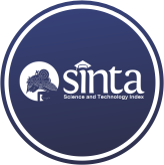Pengaruh Stopword Removal dan Stemming Terhadap Performa Klasifikasi Teks Komentar Kebijakan New Normal Menggunakan Algoritma LSTM
(1) Universitas Singaperbangsa Karawang
(2) Universitas Singaperbangsa Karawang
(3) Universitas Singaperbangsa Karawang
(*) Corresponding Author
Abstract
The development of information technology has made the popularity of social media increase in recent years, one of which is Youtube. Youtube’s popularity make this platform a major source of sentiment where almost everyone tends to express their views in the form of comments. These commnent not only express people but also have more meaning about their experiences. Comments originating from social media are unstructured so that in sentiment analysis the preprocessing stage is an important task. There are many techniques used in preprocessing including stopwrod and stemming. However, several studies have shown that the use of stopword and stemming gives different result. Therefore, in this paper, the researcher further anlyzes the effect of applying stopword and stemming on Youtube video comment regarding the New Normal policy using Long Short Term-Memory. The result obtained we found that the use of stopword and stemming greatly affects the performance of the model, this is because a lot of information is lost after the stopword process and some words change meaning after stemming.
Full Text:
PDFReferences
Slamin, Universitas Negeri Jember, Institute of Electrical and Electronics Engineers. Indonesia Section, Institute of Electrical and Electronics Engineers. Indonesia Section. Computer Society Chapter, and Institute of Electrical and Electronics Engineers, Proceedings, 2019 International Conference on Computer Science, Information Technology, and Electrical Engineering (ICOMITEE 2019) : October 16th-17th 2019, Jember, Indonesia.
V. L. Sheela, S. Anita, S. Sarada, and K. Rajmohan, “International Symposium on Induced Mutations in Plants,” In vitro Mutagenesis in Dendribium CV Sonia, no. August, p. 118, 2008.
R. Ahuja, A. Chug, S. Kohli, S. Gupta, and P. Ahuja, “The impact of features extraction on the sentiment analysis,” in Procedia Computer Science, 2019, vol. 152, pp. 341–348. doi: 10.1016/j.procs.2019.05.008.
A. Krouska, C. Troussas, and M. Virvou, “The effect of preprocessing techniques on Twitter Sentiment Analysis.” [Online]. Available: http://tweenator.com/index.php?page_id=13
Institute of Electrical and Electronics Engineers, 2018 International Arab Conference on Information Technology (ACIT).
G. K. Pitsilis, H. Ramampiaro, and H. Langseth, “Effective hate-speech detection in Twitter data using recurrent neural networks,” Applied Intelligence, vol. 48, no. 12, pp. 4730–4742, 2018, doi: 10.1007/s10489-018-1242-y.
M. Wildan, M. Annur, and B. Kartika, “Klasifikasi Multi-label Pada Laporan Masyarakat Kota Surabaya Melalui Media Sosial Twitter Menggunakan Arsitektur Long Short-Term Memory,” 2019.
J. Mothe et al., Proceedings of 2019 11th International Conference On Knowledge And Systems Engineering : KSE 2019 : October 24-26, 2019, Da Nang, Vietnam.
Surya Engineering College and Institute of Electrical and Electronics Engineers, Proceedings of the International Conference on Computing Methodologies and Communication : ICCMC 2017 : 18-19, July 2017.
Krishna. Bhavsar, Naresh. Kumar, and Pratap. Dangeti, Natural Language Processing with Python Cookbook. Packt Publishing, 2017.
Thomas. Dop, Hands-On Natural Language Processing with PyTorch 1.x. Packt Publishing, 2020.
Sri Eshwar College of Engineering and Institute of Electrical and Electronics Engineers, 2020 6th International Conference on Advanced Computing and Communication Systems (ICACCS).
Y. A. Alhaj, J. Xiang, D. Zhao, M. A. A. Al-Qaness, M. Abd Elaziz, and A. Dahou, “A Study of the Effects of Stemming Strategies on Arabic Document Classification,” IEEE Access, vol. 7, pp. 32664–32671, 2019, doi: 10.1109/ACCESS.2019.2903331.
S. Alam and N. Yao, “The impact of preprocessing steps on the accuracy of machine learning algorithms in sentiment analysis,” Computational and Mathematical Organization Theory, vol. 25, no. 3, pp. 319–335, Sep. 2019, doi: 10.1007/s10588-018-9266-8.
E. Haddi, X. Liu, and Y. Shi, “The role of text pre-processing in sentiment analysis,” in Procedia Computer Science, 2013, vol. 17, pp. 26–32. doi: 10.1016/j.procs.2013.05.005.
A. Kedia and M. Rasu, Hands-On Python Natural Language Processing: Explore tools and techniques to analyze and process text with a view to building real-world NLP applications. 2020.
Z. Fang, Y. Wang, L. Peng, and H. Hong, “Predicting flood susceptibility using LSTM neural networks,” Journal of Hydrology, p. 125734, 2021, doi: 10.1016/j.jhydrol.2020.125734.
R. B. Severtson, “What is the Team Data Science Process?,” Journal of Chemical Information and Modeling, 2017.
S. Kannan et al., “Preprocessing Techniques for Text Mining,” International Journal of Computer Science & Communication Networks, vol. 5, no. 1, pp. 7–16, 2015.
DOI: http://dx.doi.org/10.30645/j-sakti.v6i1.427
Refbacks
- There are currently no refbacks.
J-SAKTI (Jurnal Sains Komputer & Informatika)
Published Papers Indexed/Abstracted By:
Jumlah Kunjungan :











